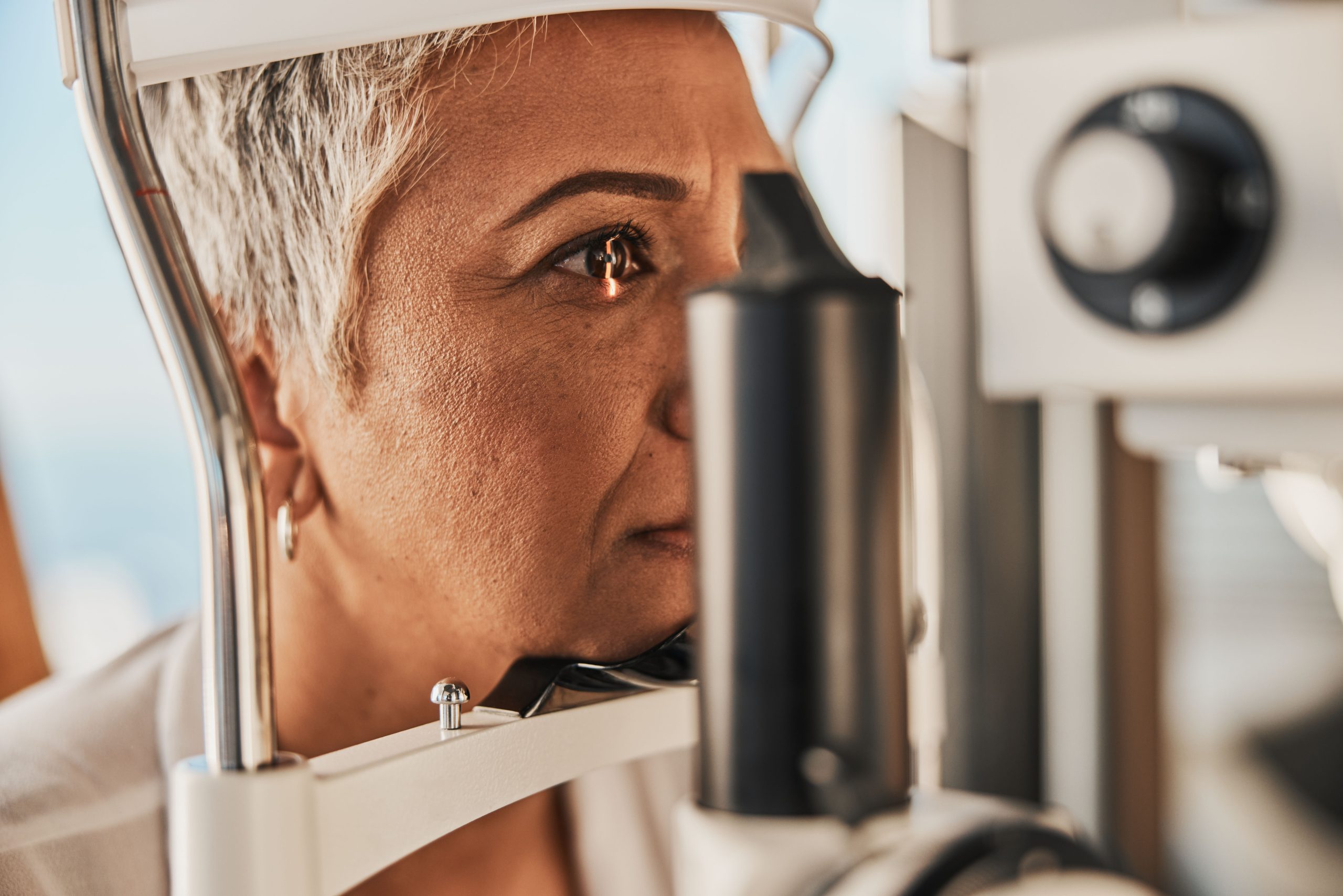Nuclear Sclerosis: Understanding the Aging Lens of the Eye
Introduction
Nuclear sclerosis is an ocular condition primarily associated with aging, impacting the transparency and flexibility of the eye’s lens. This article offers a comprehensive exploration of nuclear sclerosis, elucidating its etiology, symptoms, diagnosis, treatment modalities, and preventive measures.
What is Nuclear Sclerosis?
Nuclear sclerosis manifests as the gradual opacification and hardening of the lens nucleus, leading to visual impairment. The lens, comprised mainly of water and proteins arranged in a precise configuration, maintains transparency and refracts light onto the retina for clear vision. However, with age, the proteins undergo structural alterations, causing the lens to lose its elasticity and become more rigid. These changes result in the scattering of light rays within the lens, culminating in the characteristic symptoms of nuclear sclerosis.
Causes of Nuclear Sclerosis
Age serves as the predominant factor precipitating nuclear sclerosis, with the condition typically manifesting in individuals over the age of 40. Genetic predispositions may influence the rate and severity of lens degeneration, underscoring the importance of familial history in assessing ocular health risks. Additionally, chronic exposure to ultraviolet (UV) radiation, particularly UV-B rays, contributes to lens damage and accelerates the progression of nuclear sclerosis. Lifestyle factors such as smoking and poor dietary habits, characterized by insufficient intake of antioxidants and essential nutrients, exacerbate oxidative stress within the eye, further exacerbating lens degeneration.
Symptoms of Nuclear Sclerosis
The clinical presentation of nuclear sclerosis evolves gradually, often evading detection in its nascent stages. As the condition advances, individuals may experience:
- Visual Impairment: The onset of blurred vision, particularly in low-light environments, signifies compromised visual acuity attributed to lens opacification.
- Presbyopia: Age-related changes in the lens’ refractive index lead to difficulties in focusing on near objects, necessitating the use of reading glasses.
- Glare Sensitivity: Increased susceptibility to glare, especially during nocturnal driving or exposure to bright light sources, impairs visual comfort and acuity.
- Altered Color Perception: The accumulation of pigmented deposits within the lens may impart a yellowish or brownish tint to vision, altering color discrimination abilities.
Diagnosis and Treatment
Accurate diagnosis of nuclear sclerosis entails a comprehensive eye examination encompassing various assessments:
- Visual Acuity Testing: Assessing visual clarity using standardized Snellen charts elucidates the extent of visual impairment.
- Slit-Lamp Examination: Utilizing a slit lamp, clinicians can visualize the lens’ opacities and evaluate the degree of nuclear sclerosis.
- Pupil Dilation: Dilating the pupils facilitates examination of the lens and enables the detection of additional ocular pathologies.
- Intraocular Pressure Measurement: Monitoring intraocular pressure aids in differentiating nuclear sclerosis from other ocular conditions such as glaucoma.
While conservative management suffices for mild cases, advanced nuclear sclerosis necessitates surgical intervention:
- Cataract Surgery: Phacoemulsification, the gold standard surgical technique, involves emulsifying the clouded lens and implanting an intraocular lens (IOL) to restore visual acuity.
- Monofocal or Multifocal IOLs: Tailoring IOL selection to individual visual needs enables optimal postoperative outcomes, offering enhanced near and distance vision.
Prevention
Adopting proactive measures mitigates the risk of nuclear sclerosis development and progression:
- UV Protection: Wearing sunglasses with UV-A and UV-B filtration shields the eyes from harmful solar radiation, preserving lens integrity.
- Nutritional Supplementation: Incorporating antioxidant-rich foods such as leafy greens, citrus fruits, and omega-3 fatty acids supports ocular health and mitigates oxidative stress.
- Smoking Cessation: Quitting smoking attenuates oxidative damage to ocular tissues, reducing the likelihood of nuclear sclerosis and cataract formation.
Conclusion
Nuclear sclerosis epitomizes the age-related degenerative changes afflicting the ocular lens, necessitating vigilance in preserving visual function and ocular health. By elucidating the multifaceted facets of nuclear sclerosis, this discourse empowers individuals to adopt proactive strategies, fostering ocular longevity and enhancing quality of life.
World Eye Care Foundation’s eyecare.live brings you the latest information from various industry sources and experts in eye health and vision care. Please consult with your eye care provider for more general information and specific eye conditions. We do not provide any medical advice, suggestions or recommendations in any health conditions.
Commonly Asked Questions
While nuclear sclerosis cannot be entirely prevented, adopting a healthy lifestyle, protecting your eyes from UV radiation, and scheduling regular eye exams can help minimize the risk of developing the condition and delay its progression.
While nuclear sclerosis primarily affects the lens of the eye, it may coexist with other ocular conditions such as age-related macular degeneration or glaucoma, particularly in older adults.
Yes, nuclear sclerosis can be detected during a comprehensive eye examination, which may include visual acuity tests, slit-lamp examination, and pupil dilation to assess the clarity and integrity of the lens.
Cataract surgery is generally safe and highly effective for treating nuclear sclerosis. However, as with any surgical procedure, there are potential risks, including infection, inflammation, and rare complications such as retinal detachment.
Nuclear sclerosis itself does not directly cause headaches. However, changes in vision associated with the condition may lead to eyestrain, which can trigger headaches in some individuals.
While there are no proven natural remedies to reverse nuclear sclerosis, maintaining a healthy lifestyle with a balanced diet rich in antioxidants and UV protection may help slow its progression.
Nuclear sclerosis usually begins to manifest in individuals over the age of 40 and progresses gradually with age.
Nuclear sclerosis is a progressive condition and is not reversible. However, its symptoms can be managed through corrective lenses or surgical intervention.
While nuclear sclerosis can cause significant visual impairment, it typically does not lead to total blindness. However, advanced cases may necessitate cataract surgery to restore vision.
Nuclear sclerosis involves age-related changes in the lens of the eye, leading to opacification and vision impairment. Cataracts, on the other hand, refer to clouding of the lens due to various factors such as aging, trauma, or medical conditions.
news via inbox
Subscribe here to get latest updates !







